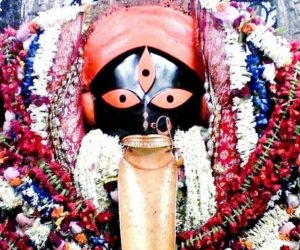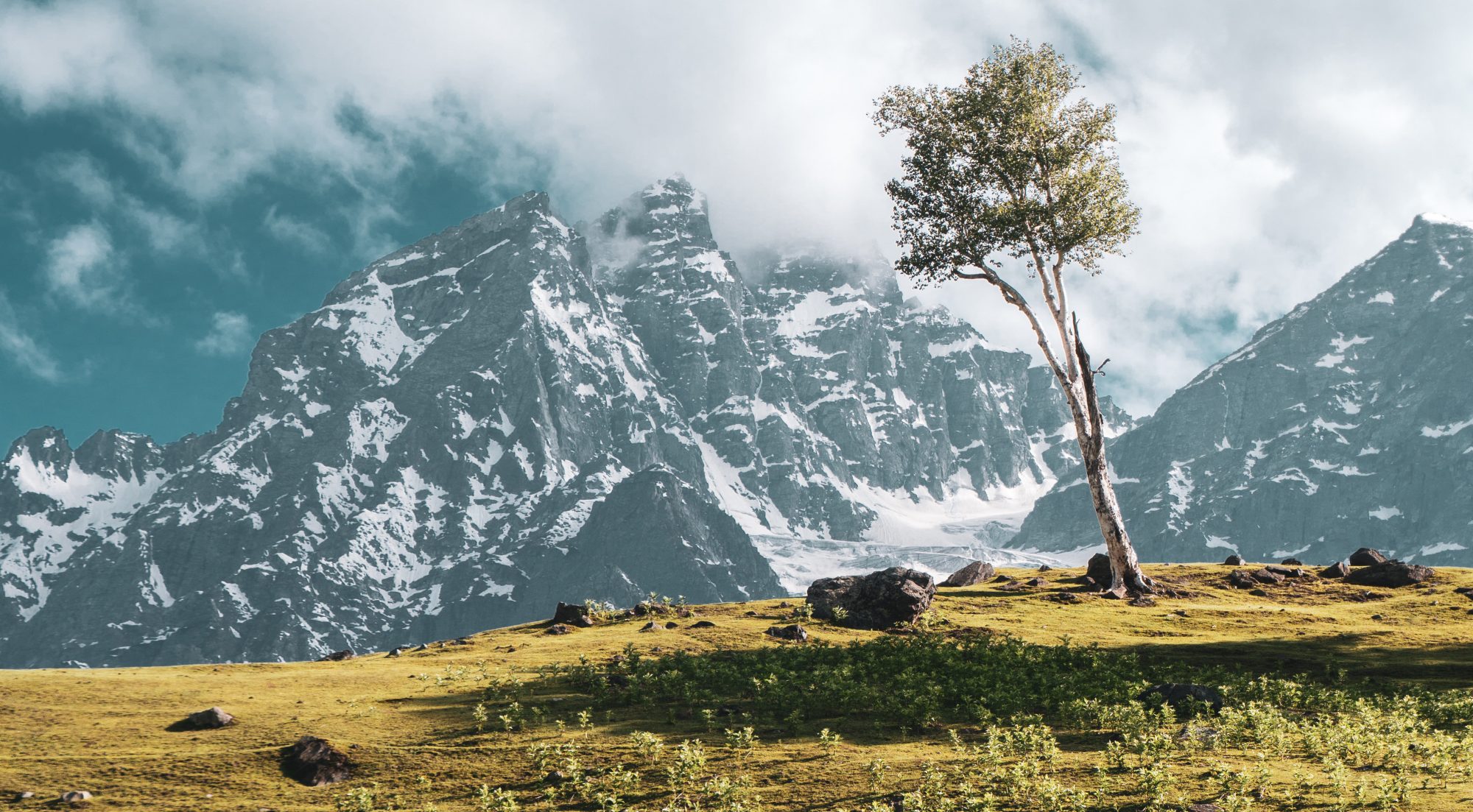
The last week has been one of reminiscences and nostalgia. I was back in Kolkata, that great throbbing city of feeling and soul, the city of my carefree younger days with its enduring memories. Arriving late in the afternoon, we couldn’t have hoped for a warmer welcome than that which greeted us at the Taj Bengal, the modern landmark of Bengali hospitality in South Kolkata’s plush neighborhood of Alipur. Dinner that evening was a languid and leisurely affair at the Taj’s showpiece restaurant, the Chinoiserie. The delectable spread would have done the veteran chefs of Kolkata’s Chinatown proud.
Culinary pleasures aside, the larger quest of this sojourn in Kolkata lay in the realm of the spiritual. The Divine Feminine, especially in her manifestations as Durga and Kali, is a vital presence here, and in the broader spiritual and cultural life of Bengal. Our plans for the next day were to visit two of the city’s most iconic shrines to the Goddess. First would be the historic temple of Kalighat, from which, as the story goes, the city derives its name. Next would be the nineteenth century temple of Dakshineshwar, intimately associated with the life of Bengal’s greatest sage of the modern era, Sri Ramakrishna.
We were up and ready at dawn the next morning, and were rewarded with an incredibly lovely spectacle of dark green foliage, thick purple clouds, and golden pink sunrays. Sights such as this might well have inspired the imaginations of a Tagore or a Bankim Chandra Chatterjee. The latter’s Vande Mataram is in part an eloquent tribute to the beautiful monsoon moods of the divine painter.
Our hotel was just a few minutes from Kalighat, and we were thus at the temple even before it was 6 am. This turned out fortuitous, as it was a Tuesday, special to Mother Kali, which also meant heavy throngs of worshippers. Upon reaching the locale, we were met by a helpful priest, Krishnaji, and his couple of attendant priests, who showed our group to his home next door. Here, we assembled offerings for worship, including flowers, coconuts and sweets. Led by Krishnaji, we then set off briskly to the temple, ignoring insistent street hawkers and other local characters who offered various types of support and intervention for our visit to the Goddess. Krishnaji marched us through a set of entrances, and presently we were almost at the doors of the garba griha, also called the Nija Mandir, the inner sanctuary of the Goddess’s own home. The crowd at this point was quite thick, even for this early hour of the morning, and from here on our pace barely inched forward.
Entering in through the doors of the sanctum, we were joined by other lines of people, elbowing and crushing upon us as we squeezed and wound our way down the steps. The expert crowd maneuvering of several priests, including Krishnaji, who were actually smiling and joking through it all, eased the pressure, even as we looked askance at some in the crowd who tried to sneak their way forward. This was a real-time spiritual lesson in keeping your composure and letting go. Soon enough though, we were in front of the great Goddess, whose startlingly alive image was clearly the compelling force at the center of it all.
A tall and articulate priest played head cop, standing directly in front of the deity, orchestrating crowd movement and issuing orders, even as he pressed upon us for contributions to an offering box for charitable initiatives. He bade us touch the image of the Goddess reverently, and prostrate at her feet, allowing us a few precious moments of imbibing Sacred Presence. A powerful maternal energy pervaded the sanctum, revealing Kali as a fierce dynamo of compassion, a perennial catalyst for the ultimate happiness of every struggling being. One needed little convincing that this was indeed how the great Mother of the Universe would manifest authentically, delighting in the surging waves of devotion from sincere hearts.
Persisting in his enjoyable Bengali accent, the priest now raised the pitch of his appeals, that our proximity to the Goddess enjoined us to give generously, and the giving would go to a credible social cause for children. We were aware that outside of this innermost sanctum, there were other lines with more distant and fleeting viewing access. His insistence toned down considerably however, and morphed to appreciation when we complied with a reasonable offering. He now made sure we could edge our way out without too much trouble, which could have otherwise been a real challenge, so fervent was the enthusiasm of the incoming crowd. I felt both relieved and distinctly fortunate.
We made our way out to a hall where we could finish up our puja, with the breaking of coconuts and the anointment of tilak marks on our foreheads. Then, past the ever insistent and annoying line of beggars that tested our resolve for patience once more, we were soon back at Krishnaji’s, stopping to pick up trinkets and memorabilia from the several stalls in the vicinity. We were happy to now offer him and his supporting cast a modest fee for their tremendous help, and were bid a grateful and genuinely warm goodbye. Our early morning darshan at Kalighat, with its accompanying spiritual transactions, was complete.
After a quick breakfast at the hotel, we now made our way northward, opting for a faster highway route on the Howrah side of the Hooghly, or Ganges river. This drive entailed crossing the Ganges and back over the famed bridges of Kolkata, driving through the verdant Bengal countryside rather than the inner traffic of the city, and in less than an hour, we were at Dakshineshwar. This sprawling complex was where the nineteenth century benefactor, Rani Rasmani, erected a beautiful temple to the goddess Kali, in her manifestation as Bhavatarini, the Mother who liberates her devotees from the fetters of worldly existence. The image of Bhavatarini Kali housed here was the great pivot for Sri Ramakrishna’s extraordinary life of spiritual mastery and universal realization.
The arrangements at Dakshineshwar were more orderly, with long lines of people waiting their turn for darshan of the Goddess. The sweet smell of incense wafted through the large courtyard, even as the sun alternated with the clouds to create a play of light and shade. Expectation was writ large on everyone who came in to view the goddess, and then happy smiles and contentment. The dynamic image of Bhavatarini seemed to radiate a blessing of safe passage through this transient world, if only we could bring ourselves to a space of inner trust. A century and a half ago, her intense presence took over the life of Ramakrishna, his consort Sarada Devi, and the illustrious band of close disciples they trained to actualize his teaching, of service to humanity as service to God.
A visit to Dakshineshwar is not complete without a visit to the Ganges, and after darshan of the Goddess, we made our way to one end of the grounds where a flight of broad steps descended to the river. The flowing waters were pleasantly cool, and even as we dipped ourselves, the overcast sky began a mild drizzle. The scene was ethereal, of a gentle curtain of rain enveloping this holiest of rivers. As we walked back up the steps and exited the vast courtyard, it began to pour with the familiar vigor of the August monsoon. Walking like little kids under this magic cascade of rain, we knew in our hearts this was a blessing from up above. Hardly had we reached our waiting cars though, than the showers abated, while cool raindrops continued to float gently, glistening in the sunshine.
Sri Ramakrishna would maintain that the Divine Mother was both male and female, for the nearer one approached the Divine, the more one would realize He has neither name nor form. Going beyond modern feminism, the wisdom of that transcendent equality has in many ways permeated the cultural mores of Bengal, in both family and social life. Under the ever-watchful gaze of the Goddess, the women of Bengal enjoy a freedom of self-expression and action, at home and in public life, perhaps unmatched by any other region of India. On the streets of Kolkata and the villages of Bengal, they are probably safer at night than women are in many other parts of the world by day. In the daily life of Bengal, Kali’s foremost influence is seen perhaps in this genuinely natural equality.

What a wonderful piece .